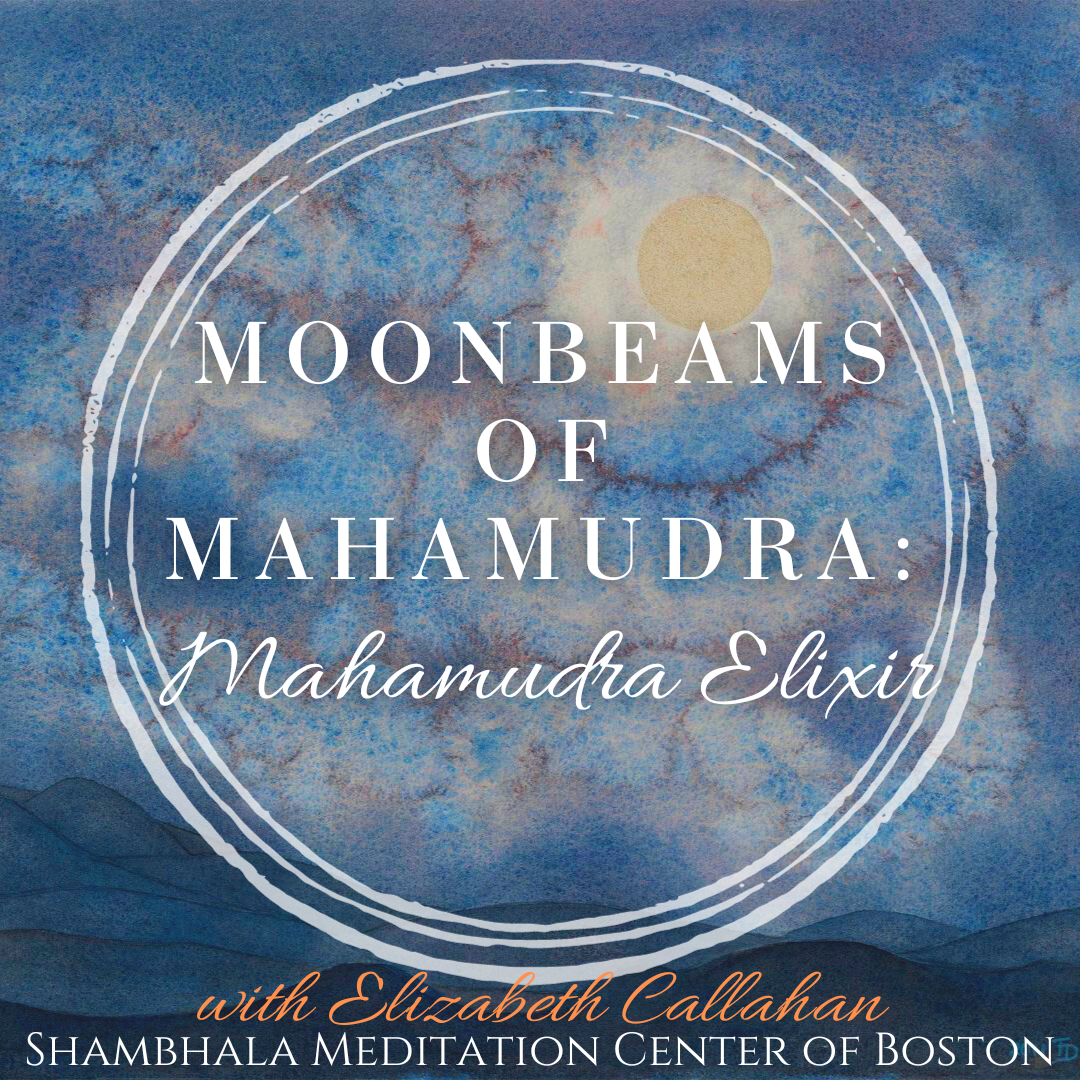Glossary of Terms
This is just a brief list of terms that you may find used in various introductory readings and classes. This information has been selected from the glossary of “The Profound Treasury of the Ocean of Dharma” by Chogyam Trungpa, compiled and edited by Judith L. Lief.
acharya- A learned spiritual teacher.
basic goodness- Good from the very beginning, beyond any reference point of bad or good.
bodhi- Awakened state, full illumination or enlightenment
bodhichitta- Enlightened heart or mind. Bodhichitta is the union of emptiness and compassion, the essential nature of awakened mind.
bodhisattva- One who has made a commitment to the mahayana path of practicing compassion and the six paramitas.
Buddha- Awakened one. The “Buddhi” refers in particular to Shakyamuni Buddha, whereas “buddha” may refer to any enlightened being or to the principle of enlightenment itself. The Buddha is also the first of the three jewels.
compassion- A key principle of mahayana Buddhism, describing the motivation and activity of a bodhisattva.
dharma- Truth, law, phenomenon. In particular, the buddhadharma, or teachings of the Buddha. The second of the three jewels.
fixation and grasping- The word order of the Tibetan sung-dzin, reflects the process of how ego arises. Having first fixated on an “other”, we grasp on to ourselves.
four noble truths- The essence of the Buddha’s first turning of the wheel of dharma: suffering, the origin of suffering, the cessation of suffering and the path.
head and shoulders- Holding oneself upright with a quality of presence, confidence and decorum.
hinayana- Lesser or narrow vehicle. The path of individual salvation, based on the practice of meditation and an understanding of basic Buddhist doctrines such as the four noble truths. It provides the essential instruction and training that serves as a basis for both the mahayana and vajrayana.
karma- The chain-reaction process of action and result.
lojong- Mind training, specifically cultivating loving-kindness and compassion by practicing the slogans of the Seven Points of Mind training.
mahamudra- The meditation transmission handed down especially by the Kagyu school, from the buddha Vajradhara through Tilopa up to the present.
mahayana- Great vehicle, the second of the three yanas, which emphasizes the union of emptiness and compassion, the practice of the paramitas, and the ideal of the bodhisattva.
maitri- Friendliness, loving-kindness; one of the four limitless qualities that are to be cultivated on the bodhisattva path.
mandala- A symbolic representation of cosmic forces in two or three- dimensional form, with a center and four gates in the four cardinal directions.
mantra- Sankrit words or syllables that are recited as a means of transforming energy through sound.
Milarepa- Tibet’s most famous yogi, Milarepa was famous for his ascetic discipline and songs of realization.
nirvana- Freedom from the sufferings of samsara; a synonym of enlightenment.
nowness- the spontaneous mind of the present instant, free from past or future; a synonym of ordinary mind.
paramita- Transcendent perfection of the mahayana. The six paramitas are generosity, discipline, patience, exertion, meditation and prajna.
postmeditation- Follow-up to formal meditation session. Carrying the awareness cultivated in meditation into all activities of one’s daily life.
prajna- Perfect knowledge, meaning wisdom, understanding.
sacred outlook- Pure perception. The awareness that all phenomena are sacred.
samsara- Cyclic existence; the repetitive cycle of births and deaths that arises from ignorance and is characterized by suffering.
sangha- the community of practictioners, companions on the path of dharma; the third of the three jewels.
setting sun- Any attitude, thought or action that leads one to degraded hehavior.
shamatha- Mindfulness practice; the practice of taming and stabilizing the mind.
shamatha-vipashyana- The union of the mindfulness of shamatha and the awareness of vipashyana.
Shambhala vision- A reference to Trungpa Rinpoche’s teachings on the sacred path of the warrior and the creation of enlightened society. Shambhala teachings are closely connected with the Buddhist meditative tradition, but have a more secular and societal focus.
tonglen- Sending and taking, a key practice of mahayana mind training; the practice of exchanging oneself for others.
vajrayana- The highest of the three yanas in the Tibetan Buddhist tradition. In the three- yana system, vajrayana is said to rest on the solid foundation and training of the previous two yanas; the hinayana path of individual development and the mahayana path of wisdom and compassion.
vipashyana- Awareness; insight arising either through direct meditative expereince or through analytic contemplation. An open, expansive quality of meditation that complements the stability and groundedness of shamatha.
The above is just a brief list of terms that you may find used in various introductory readings and classes. This information has been selected from the glossary of “The Profound Treasury of the Ocean of Dharma” by Chogyam Trungpa, compiled and edited by Judith L. Lief.







